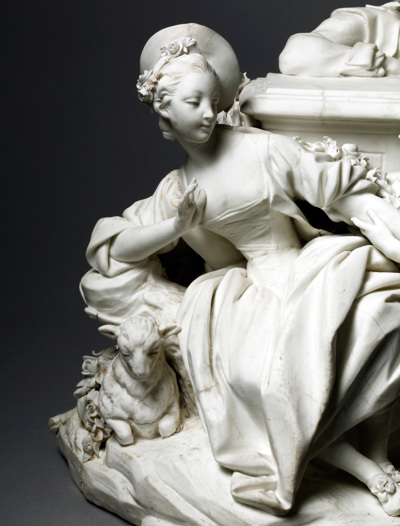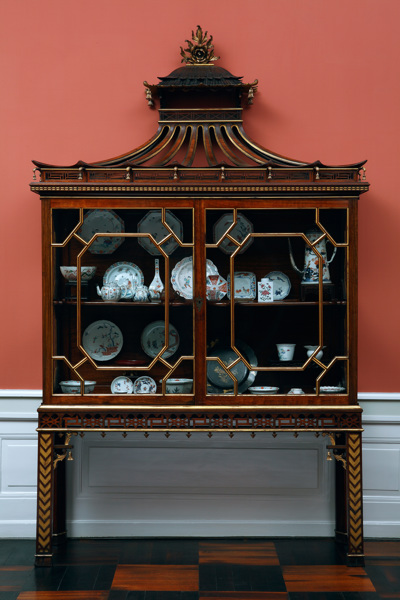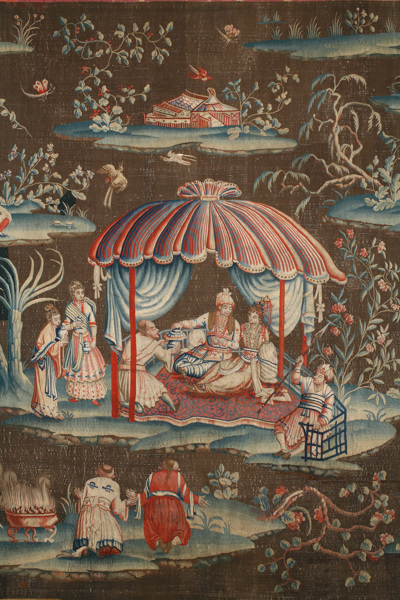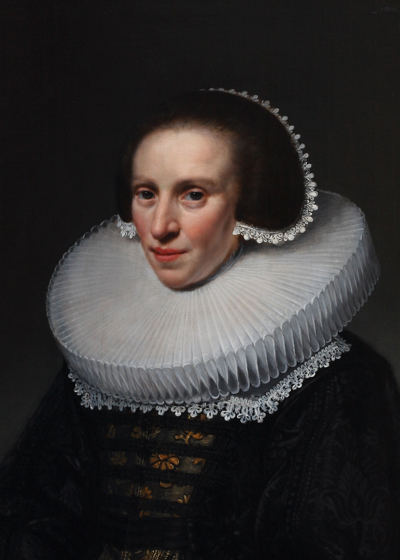Fransk keramik

Eksklusiv elegance. Fajance og blødt porcelæn
Fajance-teknikken kom via det islamiske Spanien til Italien. Herfra spredtes den til resten af Europa, og de italienske dekorationsformer dannede i begyndelsen forbilleder.
Ligesom i Italien lykkedes det snart i Frankrig at udnytte fajancens muligheder til det yderste. Det tin-glaserede lergods dekoreres med figurative scener, der i farver og toner kom ganske tæt på egentligt maleri. Omkring 1750 begyndte man i Frankrig at fremstille fajance-dekorationer med overglasurmaleri. Denne teknik anvendtes også på det porcelæn, som man nu magtede at fremstille.
Former og dekorationstyper udgjorde længe pendanter til rokokoens mere eksklusive porcelæn. Konkurrencen fra porcelænsfremstillingen tvang dog allerede i løbet af anden halvdel af det 18. århundrede mange franske fajancefabrikker til at lukke.
Det tidlige franske porcelæn fra det 18. århundrede er ”blødt porcelæn”. Det er fremstillet uden kaolin og brændt ved en relativ lav temperatur, hvilket gør det mindre holdbart end rigtigt porcelæn. Skærven har imidlertid en smuk, elfenbensagtig tone, og den kan påføres et ubegrænset antal farver, der efter brændingen fremstår med en enestående dybde og glans. De tidligste fabrikker lå i eller i nærheden af Paris: St. Cloud, Chantilly, Mennecy samt Vincennes. Sidstnævnte fabrik flyttede i 1756 til Sèvres, efter at den franske konge Ludvig 15. havde engageret sig personligt i den, og her fremstilledes periodens teknisk set mest fuldkomne stykker.


